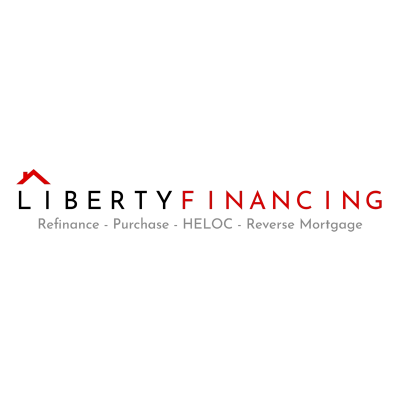10 Staying Motivated for Long-Term Financial Goals: What Works Best
Staying motivated for long-term financial goals can be a challenging endeavor, but experts have identified effective strategies to keep you on track. This article explores proven techniques, from micro-milestone mapping to creating success metrics dashboards, that boost financial discipline and maintain focus. By breaking down ambitious objectives into manageable steps and celebrating small wins, readers will discover practical ways to visualize their progress and stay committed to their financial aspirations.
- Micro-Milestone Mapping Boosts Financial Discipline
- Break Goals into Manageable Steps
- Celebrate Small Wins for Long-Term Success
- Create a Success Metrics Dashboard
- Visualize Impact and Reward Progress
- Set Milestones with Personal Meaning
- Track Progress Visually for Motivation
- Tie Goals to Tangible Personal Aspirations
- Automate Savings and Track Milestones
- Link Facility-Specific Goals to Vision
Micro-Milestone Mapping Boosts Financial Discipline
'Micro-milestone mapping' is my favorite way to keep myself motivated with long-term financial goals. Rather than thinking of a distant goal such as retirement or saving for a down payment, I break my progress down into smaller wins, monthly victories -- achieving a certain savings rate, for instance, or cutting discretionary spending by 5 percent. Research from the Journal of Consumer Psychology shows that those who celebrate incremental improvements are 42% more likely to remain committed to their long-term goals. I combine this with a visual tracker (such as a basic spreadsheet or app) because seeing progress in real time releases dopamine -- a neurological reward that builds discipline.
One tip I swear by? I automate my savings, but do a manual check-in quarterly. The automation eliminates temptation, but the conscious reflection keeps me active. A Vanguard study found that investors who used automation, along with periodic check-ins, had account balances that were 30% higher over 10 years than those who 'set and forget.' It's the financial equivalent of a pit stop -- you can let the system do the work, but you still have to look up from the dashboard to make sure you're headed in the right direction.

Break Goals into Manageable Steps
When I'm working toward a big financial goal, I try not to focus too much on the end number because, honestly, that can feel pretty far away. What keeps me motivated is breaking it down into smaller steps. I'll set mini-goals along the way, like hitting a monthly savings target or paying down a chunk of debt, and just focus on hitting those one at a time.
Something that's helped me stick with it is taking a moment to actually acknowledge when I've made progress. Nothing big, maybe just checking off the goal on a list or treating myself to something small. It's a reminder that I'm getting somewhere, even if I'm not there yet. That little boost is usually enough to keep me going.

Celebrate Small Wins for Long-Term Success
Staying motivated in the pursuit of long-term financial goals often requires a blend of discipline and small wins to keep the momentum alive. For me, it boils down to breaking the bigger picture into manageable milestones. I learned this early at N26 during the chaos of startup life. We had ambitious goals, but rather than focusing purely on the endgame, we tackled bite-sized objectives--celebrating every successful campaign or feature launch like it was the Super Bowl. It gave the team a sense of progress without getting overwhelmed by the bigger mountain ahead.
Personally, I apply the same principle to finances. One time, I set a big savings goal to reinvest into spectup's growth. Instead of obsessing over the final number, I divided it into quarterly targets, rewarding myself with little incentives (a good coffee machine, in one case) after reaching each checkpoint. It kept the journey manageable and fun. I also believe in transparency--tracking progress openly, much like we track startups' growth metrics at spectup. It's motivating to see how every effort accumulates.
Lastly, it helps to stay attached to the "why." Whether that's securing stability for my family, scaling spectup to empower more businesses, or simply aiming for financial independence, the emotional tie to the goal rejuvenates focus. I won't lie--it sometimes still takes a cup of strong coffee and a pep talk, but finding those sparks of progress can make the uphill climb feel like an adventure instead of a slog.

Create a Success Metrics Dashboard
I've found that breaking down long-term financial goals into measurable quarterly milestones is my most effective motivation strategy. In the 3PL industry, where I've built businesses from a vacant morgue to 140,000 square foot warehouses, I've learned that the path is rarely linear.
My go-to tip: Create a "success metrics dashboard" that tracks not just end goals but the leading indicators that predict success. In logistics, we don't just measure revenue—we track pick accuracy, shipping times, and client retention because they signal future financial health.
When I started my first fulfillment business, tracking our weekly new client acquisition rate kept me motivated even when cash flow was tight. Those early metrics showed momentum building before the financial rewards materialized.
For personal finances, apply the same principle. If retirement or building a business is your goal, don't just check your account balance monthly (a lagging indicator that can discourage you). Instead, track your weekly savings rate, networking activities, or skills development—the leading indicators that predict future financial success.
The magic happens when you create visual progress markers and celebrate these smaller wins. Our brains respond to measurable progress, which releases dopamine and creates a positive feedback loop.
What's worked for me: Each quarter, I conduct a "metrics review," adjusting my dashboard based on what's working. This prevents the common trap of setting a big goal and then losing steam as time passes without visible progress.
Remember, motivation isn't just about willpower—it's about creating systems that make progress visible and celebrations frequent.
Visualize Impact and Reward Progress
Staying motivated during the long journey towards achieving substantial financial goals can sometimes feel daunting. One strategy I've found particularly useful is visualizing the positive impact achieving these goals will have on my life. Whether it's being debt-free, owning a home, or securing a comfortable retirement, picturing the end state in vivid detail can create a powerful emotional push to stay on course. Additionally, I like to set up mini-rewards for myself along the way. For instance, after reaching a savings milestone, I might treat myself to a small luxury or a special outing. This method not only breaks up the monotony of saving but also provides tangible incentives to keep moving forward.
It's all about creating a balance between long-term aspirations and short-term achievements. By setting clear, achievable milestones and rewarding yourself upon reaching them, you can maintain a steady pace without losing sight of the bigger picture. Remember, the journey towards financial freedom doesn't have to be a solo trek—sharing your goals with friends or a financial advisor can also provide motivation and accountability. Keep focused, celebrate the small wins, and steadily you'll see your financial dreams take shape.

Set Milestones with Personal Meaning
The go-to method for me to stay motivated with my long-term financial goals is to break them down into smaller milestones. Having large-scale goals like becoming totally debt-free or saving up to buy a home can feel overwhelming and harder to achieve. But if you celebrate progress in stages, that can keep the momentum going well.
One tip that I will offer in this context is visual tracking. This can work in different ways, like using a savings app or a chart. Whatever you end up using, tracking your progress in a measurable way that you can visually see can help you stay consistent. Plus, it feels rewarding to see the debt reduce and savings grow.
I also recommend attaching a reason to each of the goals that is personal to you. For example, someone who experienced financial difficulties in their childhood may plan their financial goals centered around creating a better future for their children so that they never experience similar hardships. Attaching a reason that is emotionally meaningful can be a great motivator to stick with long-term financial goals.

Track Progress Visually for Motivation
My go-to method for staying motivated with long-term financial goals is breaking them down into small, achievable steps. Instead of focusing on the big number or long timeline, I set monthly or even weekly mini-goals. It keeps things manageable and gives me regular wins to stay encouraged. One tip that really helps: track your progress visually—whether it's a simple spreadsheet or a progress bar. Seeing how far you've come makes it easier to stay focused on where you're going.

Tie Goals to Tangible Personal Aspirations
One method that has kept me motivated when pursuing long-term financial goals is tying each goal to something deeply personal and tangible. For me, that was owning my own business. After spending years learning the ropes from experienced horticulturists and working across different gardening companies, I realized that the only way I could fully apply my knowledge, passion, and creativity was by backing myself and starting Ozzie Mowing and Gardening. I didn't just want a business; I wanted the freedom to design my own life around what I love. So every early morning and every weekend spent saving, budgeting, and even turning down some comforts was made easier because I could clearly see what I was working toward. That sense of purpose made discipline much easier to maintain.
A key moment where my experience paid off was in the early days of running the business. I didn't have a big team or loads of resources, but I had years of practical gardening knowledge and a formal qualification in horticulture that gave me the confidence to handle complex jobs. That foundation meant I could offer high-quality services from day one, which led to strong word-of-mouth and repeat business. Eventually, that consistency in work led to winning a customer service award, which brought in even more clients. It's a great example of how staying focused on the bigger picture while using the tools I already had helped me turn a long-term goal into a reality.
Automate Savings and Track Milestones
My go-to method for staying motivated when pursuing long-term financial goals is breaking down big goals into smaller, manageable milestones. By setting incremental targets, I can celebrate small wins along the way, which helps maintain momentum and keeps me focused on the bigger picture. One tip that helps me stay on track is automating my savings and investments, so I don't have to think about it each month--it's consistent and feels like a natural part of my routine. I also track my progress regularly to see how far I've come, which serves as a reminder of why I started. Keeping these smaller goals in mind helps me stay motivated, even when the end goal feels far off.

Link Facility-Specific Goals to Vision
Owning and operating multiple self-storage facilities requires a long-term mindset, especially when you're juggling day-to-day operations with larger financial goals like property expansion, renovations, or building reserves. My go-to method for staying motivated is to break those big-picture goals into smaller, measurable milestones--and then tie them directly to each facility.
For example, instead of just saying "we want to improve revenue across all locations," I'll set specific targets like increasing climate-controlled occupancy in Lewiston by 15% or upgrading the security system in Waterville within a set quarter. Each milestone feels more achievable, and when we hit them, it creates momentum that fuels the bigger vision.
One tip that helps me stay on track is revisiting those goals monthly and tying them back to our 'why'--whether that's creating better customer experiences, improving property value, or building financial stability for future investments. When you're managing several locations, it's easy to get lost in the daily grind. But keeping that roadmap visible and celebrating progress as it happens helps me and my team stay focused and energized even when the finish line is still far off.




